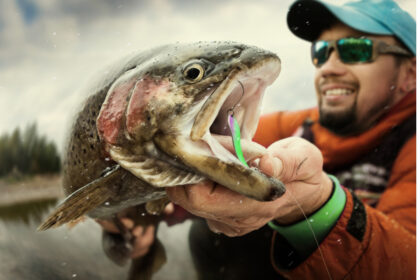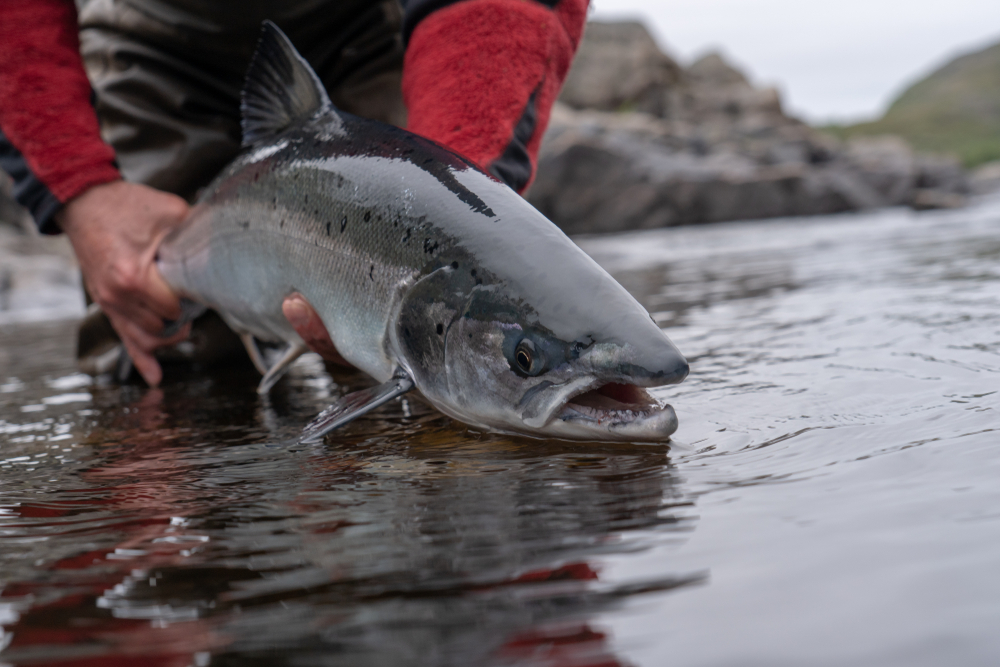
How to Go Fishing in a Lake Using the Carolina Rig
Amateur anglers learn pretty quickly that there’s a whole lot more to catching trophy bass from fishing in a lake than just baiting your line, tossing it in the water, crossing your fingers and hoping for the best.
Setting up your line correctly is a huge piece of the puzzle, especially when you are working with something like the Carolina rig. Perhaps not a “push button” method for landing monsters in your boat on demand, the Carolina rig is pretty close to that though – and you’re going to want to learn how to use it effectively.
In this detailed guide we run through (almost) everything you need to know about how to go fishing in a lake using the Carolina rig.
By the time you’re done with the inside info below you’ll have a good idea about:
- What the Carolina rig is
- How to set the Carolina rig up
- What makes the Carolina rig so attractive to fish in a lake
… And that’s just the tip of the iceberg!
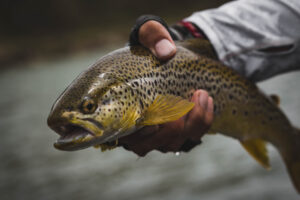
Carolina Rig History
While nobody’s really certain of exactly where or when the Carolina rig came to be, most anglers agree that fishermen fooling around with different rigging setups in South Carolina (around the Santee Cooper reservoir region) in the later 60s and early 70s pioneered and then popularized this rig.
The Carolina rig really took off in 1973 when legendary angler Bill Dance used Carolina rigs almost exclusively to finish second place in the Bassmaster Classic.
Fishermen all over the country (and later the world) started to use the set up almost immediately afterwards, and in 1985 Jack Chancellor used this rig to win the Bassmaster Classic out on the Arkansas River
Beloved by professionals and amateurs alike, there are different kinds of variations of the Carolina rig. Every angler has different ways to sort of personalize the set up for the water they are fishing, and that’s a big part of why it’s so popular as well.
Setting Up the Carolina Rig for Fishing in a Lake
Getting your line set up for the Carolina rig is really pretty simple and straightforward.
What You’ll Need
- A sinker
- A bead
- A swivel
- Some leader line
- An offset worm hook, preferably with a wide gap
- A soft plastic worm
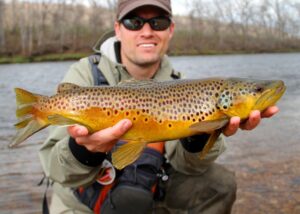
How to Tie the Carolina Rig
First, you’re going to want to put your sinker on the mainline that you have attached to your pole. The bead comes next – preferably a plastic bead, since they are a lot more durable and a lot more resilient than glass beads.
After the bead has been attached to your line you want to get a barrel swivel in place. Attach 2 or 3 feet (give or take) of leader line that runs down to that offset worm hook.
Slide your plastic worm (or any other plastic creature bait you like to use) over the wide gap hook and you are rocking and rolling!

What Makes the Carolina Rig So Great for Fishing In A Lake?
There are a couple of big benefits to using this kind of rigging, especially when you are learning how to go fishing in a lake using the Carolina rig setup on your line.
Lake fishing (usually) means you are going after bigger fish with more aggression – bass or lake trout, more often than not.
Throwing the Carolina rig into the water is going to prove to be almost magnetic to these kinds of fish. Big lake fish are both aggressive and opportunistic feeders, and the Carolina rig is going to drive them wild.
The circular motion of the Carolina rig slowly being retrieved grabs the attention of any fish with even just a little bit of aggression, almost compelling them to strike.
On top of that, the ability to drop this lure as close to big fish in a lake as possible (even letting it ride all the way down to the bottom before popping and jerking it during the retrieve) means you’ll be able to grab more opportunistic feeding fish as well.
Any Drawbacks to the Carolina Rig?
The biggest drawback to using the Carolina rig is that it’s going to snag and catch on structure, rocks, branches, and anything else on the bottom of the lakes that you are fishing.
Carolina rigs are designed to be fished down low. That means they are going to “bottom crawl”, especially with your slow retrieve, and you have to be careful when you pop and jerk line to make sure that you aren’t snagging the hook and snapping your line in the process.
Another thing you have to think about when fishing the Carolina rig is that there’s going to be a little bit of slack between the sinker and the bait itself.
When you go to set the hook you really have to get on it, taking up that slack quickly enough to set a hook without telegraphing to the fish what’s about to happen – leaving them to spit out the bait and run.
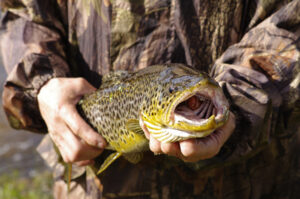
Here’s When the Carolina Rig Really Shines
Fishing in Cold, Deep Water – Lake Water – is Perfect for the Carolina rig
Carolina rigs work really (REALLY) well in cold water conditions – particularly in the winter and spring when fish have pushed themselves into deeper, warmer spots of water in lakes.
The Carolina Rig Works Great When It’s Cloudy and Windy
The Carolina rig is also going to do well when surface action is at an all-time low. Cloudy and windy weather makes fish really hesitant to pop up and grab food off the surface (or even just a few feet underneath the surface), compelling them to hunt for their meals a little lower in the lake.
That’s where the Carolina rig grabs them!
The Carolina Rig Loves All Open Water
Because of the way that you’ll cast and retrieve your Carolina rig you’re going to be able to cover a ton of water with it. That makes it an ideal set up for those fishing open water like big lakes and ponds, for example.
You can drop this to the bottom, retrieve the bait at a steady pace, and then present it to another whole pocket of fish in just a couple of minutes. You’ll be able to cover a lot of water with the Carolina rig – and catch some real monsters with it, too.

Closing Thoughts
At the end of the day, if you’re going to be using the Carolina rig to catch more fish in lakes you want to be sure that you are steady, deliberate, and almost “slow walking” your bait along the bottom of the water you are fishing.
Casting the Carolina rig is really pretty simple and straightforward. Let the sinker take your bait out, pulling it down to the bottom, and keeping it there so that you can sort of bounce it around on its way back during the retrieve.
You do want to be sort of slow and intentional with your retrieve, though.
Let the rig and your plastic bait do the bulk of the heavy lifting for attracting fish to your line. A couple of jerks and a pop or two here and there are all that’s necessary to really drive fish wild.
Make sure that you keep your rod tip low to the water when fishing the Carolina rig, though.
You’ll need to take up the slack between the sinker and your bait in a hurry. That’s tough to do if your rod is sky high during the retrieve.
Keep these tips in mind as your learning how to go fishing in a lake using the Carolina rig and you’ll be good to go!



